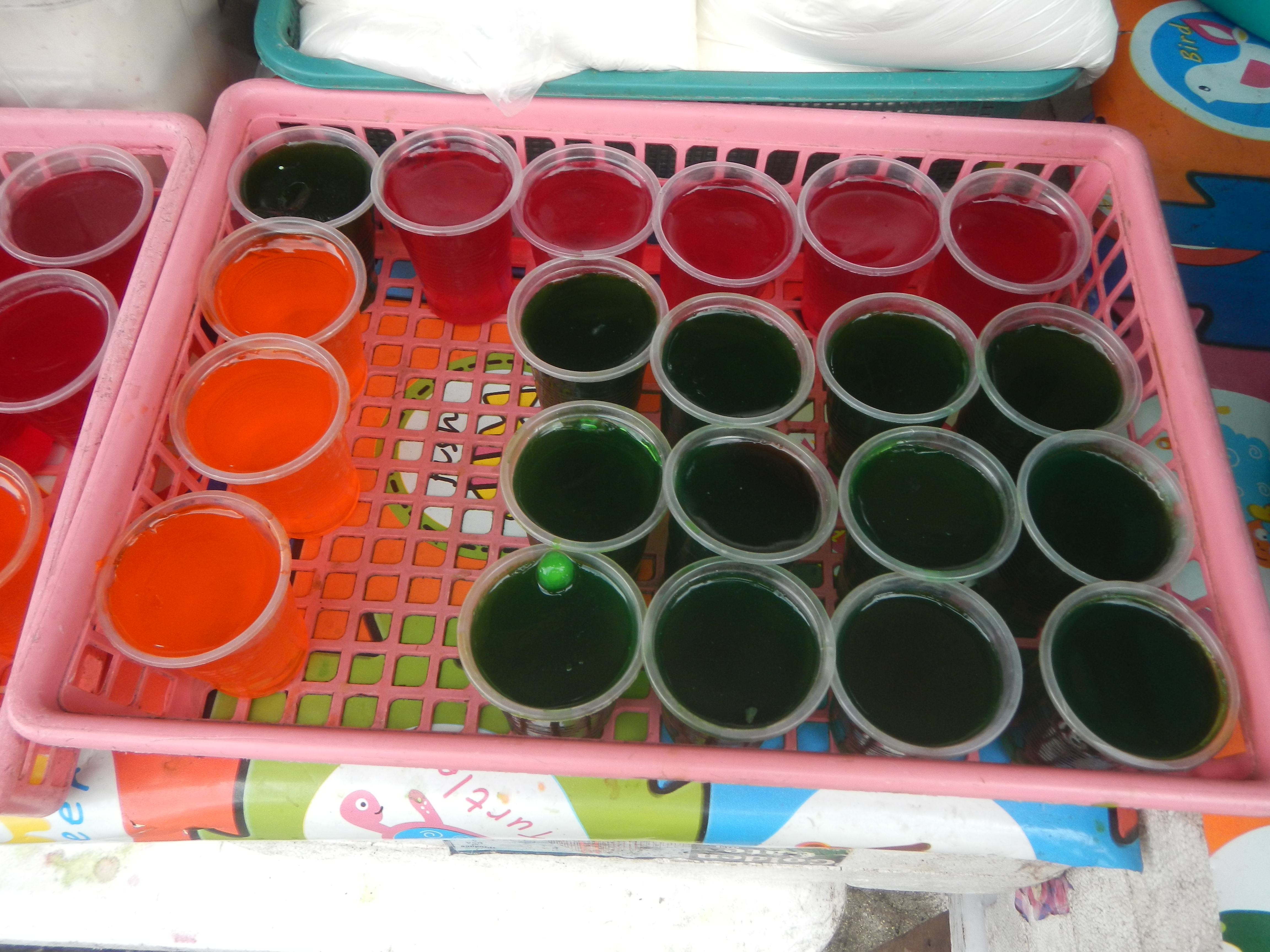|
Gulaman
''Gulaman'', in Filipino cuisine, is a bar, or powdered form, of dried agar or carrageenan used to make jelly-like desserts. In common usage, it also usually refers to the refreshment ''sago't gulaman'', sometimes referred to as ''samalamig'', sold at roadside stalls and vendors. Description ''Gulaman'' is the Filipino culinary use of agar, which is made of processed ''Gracilaria'' seaweed; or carrageenan derived from other farmed seaweed species like ''Eucheuma'' and ''Kappaphycus alvarezii'' which were first cultivated commercially in the Philippines. It is usually sold dehydrated and formed into foot-long dry bars which are either plain or coloured. It is also commonly sold in powder form. Uses ''Gulaman'' bars are used in the various Filipino refreshments or desserts such as '' sago at gulaman'', ''buko pandan'', agar flan, ''halo-halo'', ''fruit cocktail jelly'', different varieties of Filipino fruit salads, black ''gulaman'', and red ''gulaman''. Differences between ... [...More Info...] [...Related Items...] OR: [Wikipedia] [Google] [Baidu] |
Samalamig
Samalamig, also known as palamig, is a collective term for various Filipino sweet chilled beverages that usually include jelly-like ingredients. They come in various flavors, and are commonly sold by street vendors as refreshments. Typical ingredients of the drinks include ''gulaman'' (agar), sago pearls, kaong, tapioca pearls, nata de coco, and coconut (including macapuno). They are usually anglicized as pearl coolers or pearl and jelly coolers. Samalamig may also include various chilled fruit juices (usually with chunks of fruit), chocolate, and coffee drinks, regardless if jellies are added, that are also typically sold by samalamig vendors. Name The name "samálamig" comes from ''sa'', meaning "for; to; at", and ''malamíg'', an adjective meaning "cold, chilly" in Tagalog. "Sa malamig" may thus loosely mean "for cold (drinks); at a cold place; chilled". "Sa malamig" might have come from the calls of ambulant vendors, telling people to come and get cold drinks, i.e. "itos ... [...More Info...] [...Related Items...] OR: [Wikipedia] [Google] [Baidu] |
Sago't Gulaman
Samalamig, also known as palamig, is a collective term for various Filipino sweet chilled beverages that usually include jelly-like ingredients. They come in various flavors, and are commonly sold by street vendors as refreshments. Typical ingredients of the drinks include ''gulaman'' (agar), sago pearls, kaong, tapioca pearls, nata de coco, and coconut (including macapuno). They are usually anglicized as pearl coolers or pearl and jelly coolers. Samalamig may also include various chilled fruit juices (usually with chunks of fruit), chocolate, and coffee drinks, regardless if jellies are added, that are also typically sold by samalamig vendors. Name The name "samálamig" comes from ''sa'', meaning "for; to; at", and ''malamíg'', an adjective meaning "cold, chilly" in Tagalog. "Sa malamig" may thus loosely mean "for cold (drinks); at a cold place; chilled". "Sa malamig" might have come from the calls of ambulant vendors, telling people to come and get cold drinks, i.e. "itos ... [...More Info...] [...Related Items...] OR: [Wikipedia] [Google] [Baidu] |
Filipino Cuisine
Filipino cuisine ( fil, lutong Pilipino/pagkaing Pilipino) is composed of the cuisines of more than a hundred distinct ethnolinguistic groups found throughout the Philippine archipelago. A majority of mainstream Filipino dishes that compose Filipino cuisine are from the food traditions of various ethnolinguistic groups and tribes of the archipelago, including the Ilocano, Pangasinan, Kapampangan, Tagalog, Bicolano, Visayan, Chavacano and Maranao ethnolinguistic groups. The styles of preparation and dishes associated with them have evolved over many centuries from a largely indigenous (largely Austronesian) base shared with maritime Southeast Asia with varied influences from Chinese, Spanish and American cuisines, in line with the major waves of influence that had enriched the cultures of the archipelago, as well as others adapted to indigenous ingredients and the local palate. [...More Info...] [...Related Items...] OR: [Wikipedia] [Google] [Baidu] |

.jpg)
